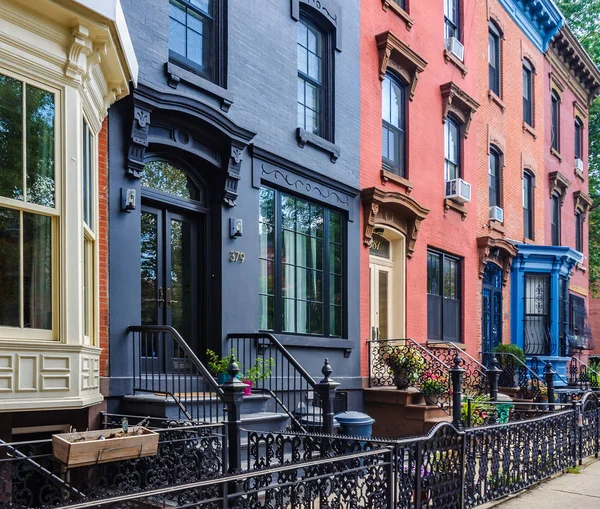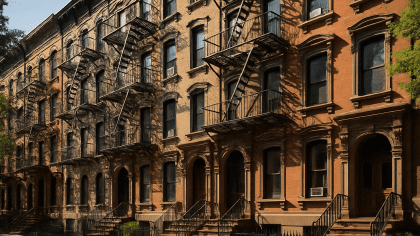Finding affordable housing in cities where rents are rising can be challenging, especially for young people, students, or families on a budget. If you’re in this boat, you may have heard about “income-restricted” apartments, a type of affordable housing designed to help individuals and families with limited income access safe, quality housing.
But what exactly are income-restricted apartments, and how can you qualify for one?
In this guide, we’ll break down everything you need to know about income-restricted apartments, including eligibility criteria, benefits, the application process, and the impact on communities.
Quick Summary
Income-restricted apartments provide affordable housing options for individuals and families who meet specific income criteria. Determined by a percentage of the Area Median Income, these apartments allow renters to live affordably, offering benefits like financial relief, community support, and stable housing.
Programs like the Low-Income Housing Tax Credit and Section 8 voucher help make income-restricted housing available in cities nationwide. This guide covered the basics, including eligibility, the application process, and the impact on communities, along with resources for finding available units.
Understanding income-restricted housing can help make affordable housing a reality, promoting greater stability and diversity in communities.
What Are Income-Restricted Apartments?
Income-restricted apartments are rental units designed to be affordable for people who meet specific income criteria. These apartments are part of government-supported programs that aim to provide affordable housing options for low- and moderate-income individuals and families.
The key idea is simple: instead of charging market-rate rent, income-restricted apartments have rent prices set based on a percentage of the tenant’s income, making them more affordable.
Eligibility Criteria for Income-Restricted Apartments
Qualifying for an income-restricted apartment isn’t just about showing interest; it requires meeting specific criteria. Here’s what’s usually required:
1. Income Limits
- Area Median Income (AMI): Eligibility is often based on a percentage of the Area Median Income (AMI) for your location. For example, if the AMI in your area is $60,000, an income-restricted apartment may only be available to those earning 50% or less of that amount.
- Income Tiers: Some programs set income requirements at various tiers, such as 30%, 50%, or 80% of the AMI.
2. Family Size
- Household Size and Income: The income limit may change depending on the number of people in your household. Larger households may have slightly higher income limits.
3. Residency Status
- Some programs may have additional requirements, such as being a U.S. citizen or legal resident.
Types of Income-Restricted Housing Programs
Income-restricted apartments are part of several programs at local, state, and federal levels. These are some of the most common programs providing income-restricted housing:
1. Low-Income Housing Tax Credit (LIHTC)
- The LIHTC program is one of the most well-known affordable housing initiatives. Developers receive tax credits to build or renovate apartments for low-income tenants, who then pay rent based on their income.
2. Section 8 Housing Choice Vouchers
- The Section 8 program offers vouchers to eligible low-income renters, which can be used to pay a portion of their rent in income-restricted or even some market-rate apartments.
3. Public Housing
- Public housing properties are government-owned and operated, specifically for low-income families, seniors, and people with disabilities.
4. State and Local Housing Initiatives
- Many states and cities have local programs that add further affordable housing options. These vary widely depending on location.
Application Process for Income-Restricted Apartments
Applying for income-restricted housing can take time, so it’s essential to understand the steps involved:
Step 1: Research Eligibility
- Check income guidelines for your area to ensure you meet eligibility requirements. You may need to show proof of income, tax returns, and other financial documents.
Step 2: Find Properties
- Search online, visit local housing authority websites, or check platforms like Zillow and Apartments.com, which often list income-restricted units.
Step 3: Prepare Documentation
- Gather proof of income, household size, identification, and residency documents. You may need to show previous tax returns, pay stubs, or other financial records.
Step 4: Submit an Application
- Complete applications carefully, as incomplete applications may be disqualified. Many programs have long waitlists, so be patient.
Benefits of Living in Income-Restricted Housing
Living in income-restricted housing offers various benefits beyond just affordable rent. Here’s how:
- Financial Relief: Reduces the financial stress of high rent payments, allowing residents to allocate more money to essentials.
- Stable Housing: Income-restricted apartments provide stable housing in areas where market-rate rents might otherwise be unaffordable.
- Access to Amenities: Many income-restricted apartments come with amenities such as community spaces, maintenance services, and even parks.
- Community Support: Many programs offer resources for tenants, from financial counseling to job placement, fostering a supportive environment.
How Income Restrictions are Determined
Income restrictions are calculated based on the Area Median Income (AMI), which the U.S. Department of Housing and Urban Development (HUD) determines annually. Here’s a closer look:
- Area Median Income: This figure represents the midpoint of all household incomes in a specific area.
- Income Limits by Percentage: Common income limits include 30%, 50%, and 80% of the AMI.
- Rent Calculation: Rent is often set to be 30% of the tenant’s income, providing a financially manageable option for low-income residents.
Differences Between Income-Restricted and Market-Rate Apartments
Income-restricted and market-rate apartments offer two different housing experiences. Here’s how they compare:
- Rent Prices: Income-restricted apartments have rent prices set based on tenant income, while market-rate apartments follow current market prices.
- Eligibility Requirements: Income-restricted units require applicants to meet income limits, while market-rate rentals have fewer eligibility restrictions.
- Quality and Location: Although income-restricted apartments are more affordable, many provide similar amenities and quality to market-rate housing.
Common Misconceptions About Income-Restricted Apartments
There are some common myths surrounding income-restricted apartments that can cause confusion. Let’s clear them up:
Misconception 1: Income-Restricted Apartments Are Substandard
- Reality: Many income-restricted units offer the same amenities as market-rate rentals and are held to high standards by developers and housing authorities.
Misconception 2: Only Unemployed Individuals can comply with qualification
- Reality: Employed individuals often qualify for income-restricted housing if their earnings fall within the program’s income limits.
Misconception 3: It’s Impossible to Find Available Units
- Reality: While there may be waitlists, new income-restricted apartments are regularly developed, and resources are available to help renters find them.
Resources for Finding Income-Restricted Apartments
There are numerous resources for finding income-restricted apartments, including:
- HUD Website: HUD’s website offers a list of affordable housing options in each state.
- Local Housing Authorities: Many cities have housing authorities dedicated to helping residents find affordable units.
- Affordable Housing Platforms: Websites like AffordableHousingOnline.com list income-restricted rentals in various areas.
- Real Estate Websites: Platforms like Zillow and Apartments.com often have filters for affordable housing options.
Impact of Income-Restricted Apartments on Communities
Income-restricted apartments benefit not just the tenants but also the larger community:
- Promotes Diversity: Income-restricted housing allows people from various income levels to live in one area, fostering diversity.
- Improves Stability: Affordable housing reduces the likelihood of displacement and creates more stable, cohesive communities.
- Reduces Homelessness: By providing affordable rental options, income-restricted apartments help combat homelessness.
- Supports Local Economies: Residents with more disposable income contribute to local businesses, helping local economies grow.





